If you read this blog through an email subscription on your phone, the photos might not show up. (Some people get them, some do not.) You can see them by going to the blog on the internet. It is called cabinart.net/blog, and the latest post is always on top.
Wildflowers drive my hiking choices, and ever since publishing Mineral King Wildflowers (almost sold out), I look for opportunities to put them in my oil paintings. Because I paint small, they end up as tiny dots.
Doesn’t matter, because those tiny colored dots are magical enhancements of scenes that would otherwise be primarily green, gray and brown.
Remember this oil painting? It sold very quickly due to those tiny colored dots.
So, of course I painted it again. Here is the sequence.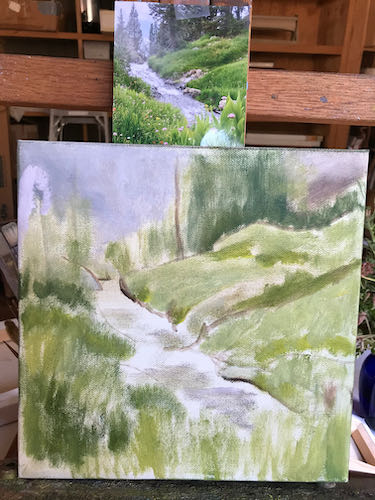
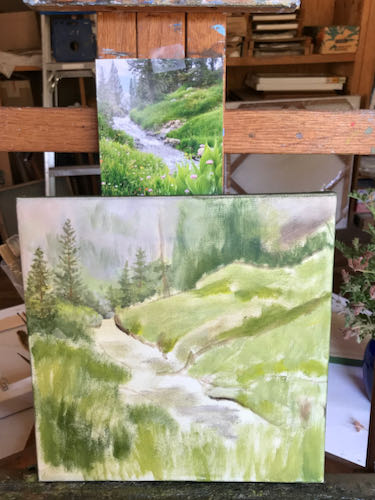
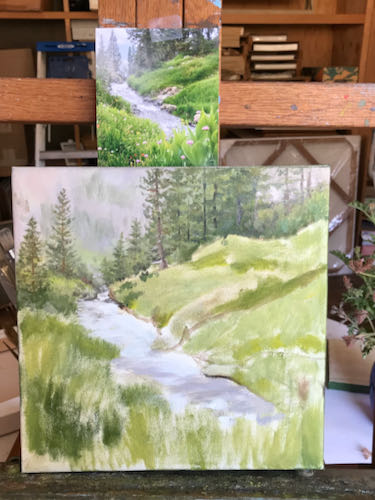
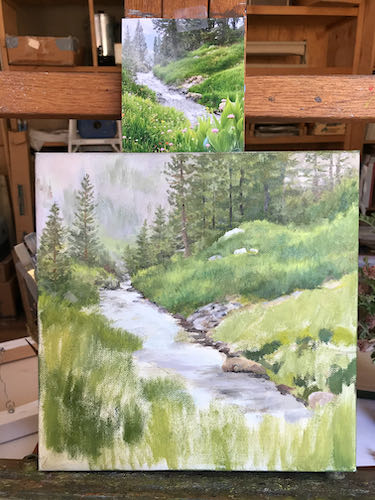
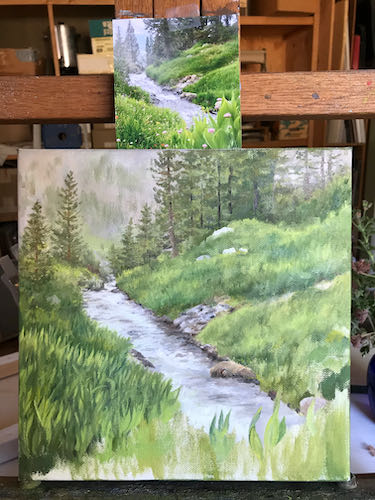
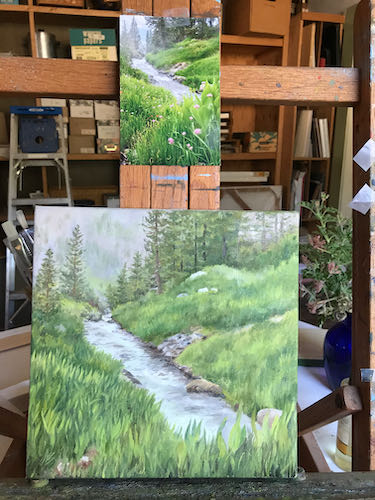

Once it is dry enough to scan, I will show you a non-shiny version with colors that are closer to the real painting.
6 Comments
P.S. “Almost sold out” is a phrase an author loves to hear!
“Almost sold out” is almost better than “sold out”, because there is still time to make a decision about what to do next.
Seeing those “tiny dots” in person is my preference, of course! But seeing them in a painting is the next best.
Sharon, can you identify the tiny dots??
I recognized the Indian Paintbrush right away (can we even call it that anymore??)! Coneflower which I think is not the right term but it’s what I’ve always called it (skunk cabbage?). Little yellow mountain daisies. Lupine, of course. The pink ones–I forget. Something like a mariposa lily, or? Did I see a shooting star? And the white ones, another type of daisy? My go-to flower books are at the cabin, boo-hiss!
Close, Sharon. “Paintbrush” is now the proper term for Indian Paintbrush. The yellow daisies with big brown centers are Bigelow Sneezeweed. The pinkish ones are shooting star. Whites are probably knotweed.
Comments are closed for this article!